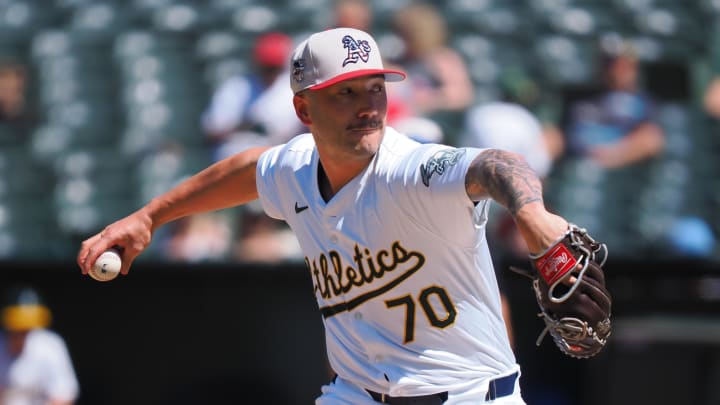Why the A's Were Smart to Not Have a Trade Deadline Fire Sale

The trade deadline came and went, and after all the speculation leading up to it, we finally have an answer as to what the Oakland A’s decided to do. Aside from trading away Lucas Erceg to the Kansas City Royals, and Paul Blackburn to the New York Mets, the A’s opted to stay put at the deadline. While the decision can be seen as confusing, it actually makes sense that the team decided to stay with what they have.
Brent Rooker was kept, as was Miguel Andujar, and while those players would have certainly generated value in a potential deal, keeping them was not a bad idea. Rooker is under team control for multiple more years and is not eligible for free agency until after the 2027 season, so trading him was not something that the A’s needed to rush. In fact, keeping him could prove to be extremely beneficial as his long term team control as well as being an exceptionally strong hitter makes him candidate to build around for future success.
Andujar, who is a free agent after next season, has produced big time for the A’s this year, currently possessing a .286 batting average and having played as well as he has for the contract that he is on ($1.7 million), was a name that was floated around heavily leading up to the deadline. Ultimately, the A’s opted to stay put with Andujar. While trading him for pieces would have also been a smart move, the A’s keeping him is not bad at all. Andujar hasn't spent much time in the big leagues since his breakout 2018 season with the New York Yankees. If he continues hitting like he has, then his value could be even higher during the offseason or at next year's deadline.
His production compared to his contract this year will certainly make him a little bit more expensive next year, his final year of arbitration, but the numbers that he has had in prior seasons, including hitting .250 in only 30 games with Pittsburgh in 2023 and hitting .235 across 36 total games for Pittsburgh and the Yankees in 2022, make him a player who most likely will not see a massive rise in price. So, if the A’s do plan want to keep his quality bat in the lineup for another season, it shouldn't cost too much.
The A’s did however make some modifications to their pitching without getting rid of All Star closer Mason Miller, opting instead to send Paul Blackburn to the Mets for pitching prospect Kade Morris, and trading Lucas Erceg to Kansas City for pitching prospects Mason Barnett and Will Klein and outfielder Jared Dickey. With a starting rotation that already includes promising arms such as Joey Estes, Mitch Spence, JP Sears and veteran Ross Stripling, the A’s were able to offload some arms to open more opportunities for those guys to shine, while also leaving the door open for Miller’s return and the possible return of Hogan Harris from the minor leagues.
While their record may suggest differently, currently sitting in fifth place in the AL West with a 45-64 record, the team has been playing very well as of late as they went 15-9 in the month of July with players like Lawrence Butler really finding a rhythm. Keeping a lot of their players and avoiding a firesale proves that while they still have a lot of work to do, the organization has faith that the potential that those players and this current group has shown can be built on in future seasons.
